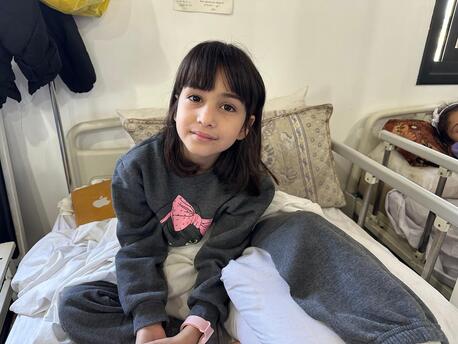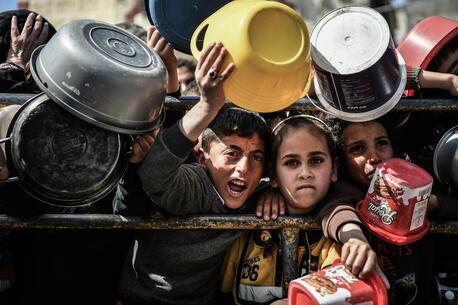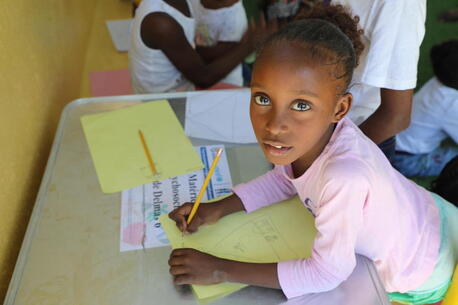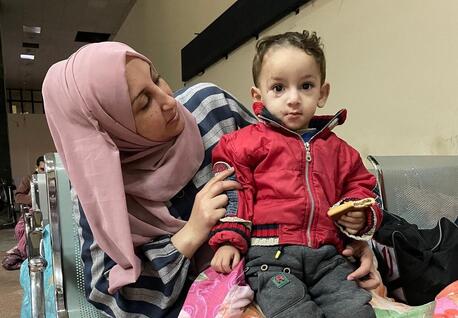
Children in Gaza Are Running Out of Time
After almost 100 days of violence, children in Gaza face a lethal triple threat: death from bombardment, disease and lack of food. UNICEF is pushing for safe, expanded access to deliver more emergency supplies.
Supply blockages are preventing humanitarian aid from reaching children caught in an unfolding catastrophe
As the situation for children in Gaza deteriorates rapidly, hundreds of trucks carrying urgently needed humanitarian aid remain stuck at the border for weeks, stranded between insufficient access corridors and protracted layers of a slow and unpredictable inspection process.
"After almost 100 days of violence, killing, bombardment and captivity for children in Gaza, all the suffering has been too much," UNICEF Special Representative Lucia Elmi said at a Palais des Nations press briefing on Jan 12.
“With every passing day, children and families in the Gaza Strip face increased risk of death from the sky, disease from lack of safe water, and deprivation from lack of food. And for the two remaining Israeli children still held hostage in Gaza, their nightmare that began on 7 October continues."
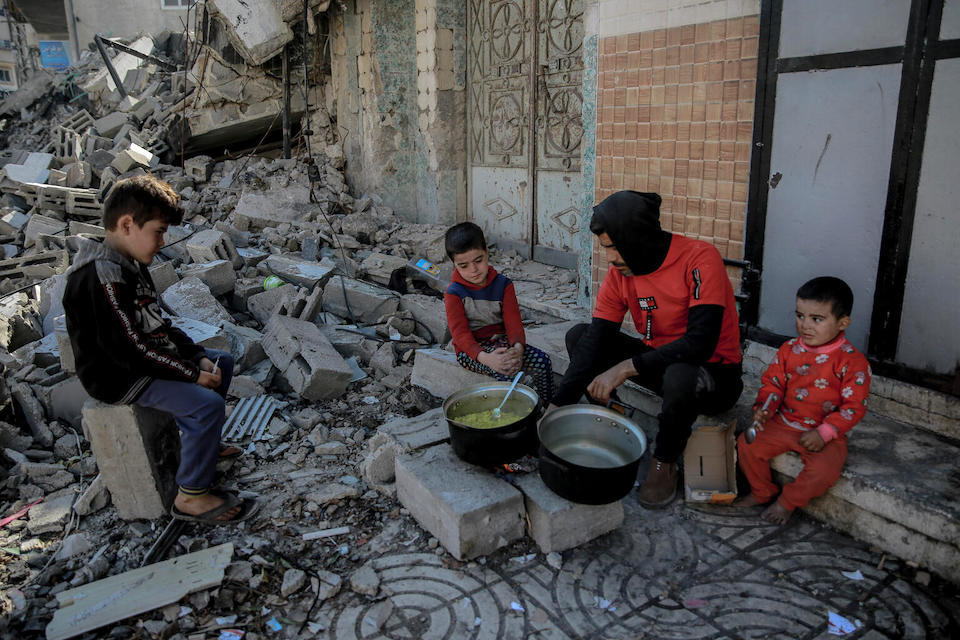
The Gaza Strip has been under an Israeli blockade since 2007, severely restricting the movement of goods and people. Before Oct. 7, 2023, most of the population already relied on humanitarian aid; 500 trucks entered Gaza daily, carrying essential supplies. Last week, an average of just 129 trucks a day were cleared for entry, according to UN figures, far fewer than what is needed to meet the growing needs of a population trapped in a war zone.
“Thousands of children have already died and thousands more will quickly follow if we don’t immediately fix three urgent bottlenecks," said Elmi.
Three supply bottlenecks must be fixed immediately to prevent the deaths of more children in Gaza
1. Safety: "Nowhere is safe in the Gaza Strip," said Elmi. "The intense bombardment and ongoing conflict in densely populated urban areas threatens the lives of civilians and humanitarian aid workers." Since Oct. 7, more than 22,000 people — including 8,000 children — have been killed in Gaza.
The bombardment is also impeding the delivery of desperately needed assistance. "When I was in Gaza last week, we tried for six days to get fuel and medical supplies to the north and for six days movement restrictions prevented us from traveling," said Elmi. "My colleagues in Gaza endured this same challenge for weeks before my arrival. Families in the north desperately need this fuel to operate water and sanitation infrastructure. They are still waiting."
2. Logistics: Some desperately needed materials remain restricted from entry, including generators to power water facilities and hospitals, and plastic pipes to repair badly damaged water infrastructure.
Once supplies are allowed into Gaza, there are significant distribution challenges, particularly in the north, including frequent communication blackouts that impede coordination and prevent people from learning where and how to access available aid.
Humanitarian aid alone is not sufficient. The volume of commercial goods for sale in the Gaza Strip needs to increase, and increase fast. — Lucia Elmi, UNICEF Special Representative
“The congestion in the south due to the massive displacement and the intense needs mean continued incidents of people in despair stopping trucks and trying to get their hands on whatever they can," said Elmi. “Shortages of fuel and trucks inside the Strip, and major damage to roads, make travel slower and less frequent."
3. Commercial: "Humanitarian aid alone is not sufficient," Elmi said. "The volume of commercial goods for sale in the Gaza Strip needs to increase, and increase fast. What is needed is at least 300 trucks of private commercial goods going in on a daily basis. This will help people purchase essential goods, relieve community tension and stimulate the cash assistance programs offered by UNICEF and others." Nearly 500,000 people in Gaza have benefitted from UNICEF-provided multi-purpose cash assistance and top-ups.
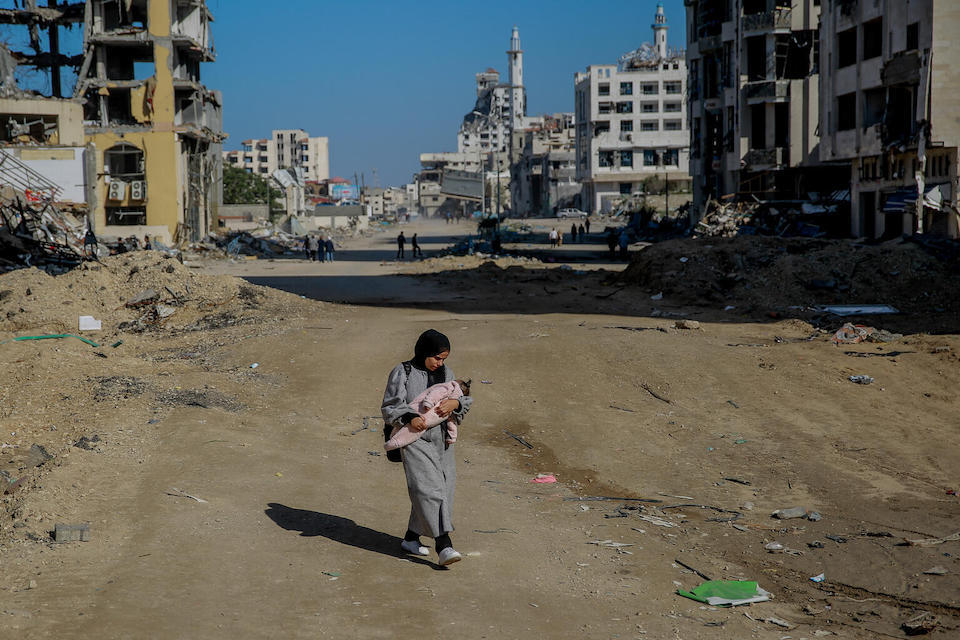
UNICEF is delivering emergency aid, but much more help is needed
Between Oct. 21 and Jan. 10, UNICEF moved 308 trucks into Gaza from Egypt, carrying warm winter clothing, tents and tarpaulins and other emergency supplies. In early January, more than 780,000 liters of bottled water delivered by UNICEF were distributed in Khan Younis and Rafah benefitting over 260,064 people including 132,600 children.
According to UNICEF's latest situation report, in the past week, seven UNICEF trucks brought critical supplies including 10,800 family hygiene kits, water tanks and collapsible tanks for 2,500 people, 577,500 sanitary pads, 69,960 bottles of ready-to-use formula for 500 infants, various medical kits and supplementary foods for 55,000 people.
The entire population of Gaza — about 2.2 million people — is experiencing acute levels of food insecurity and is at risk of famine. Every child under age 5 — 335,000 — is at high risk of severe malnutrition and preventable death.
At least half of all water infrastructure in Gaza has been severely damaged by attacks since Oct 7. Without access to safe water, children are particularly susceptible to diarrhea and other communicable diseases. With nearly 85 percent of the population displaced and living in overcrowded conditions without adequate access to sanitation and hygiene, disease outbreaks are a major risk factor.
On Dec. 29, UNICEF delivered 600,000 doses of routine vaccinations to southern Gaza, providing a crucial lifeline for children. "Today, the situation in Gaza is unimaginably stressful for children," said UNICEF's Maulid Warfa. "We do not want to see children who survive the bombing die because they are not vaccinated." Watch the video:
“An immediate and long-lasting ceasefire is the only way to end the killing and injuring of children and their families and enable the urgent delivery of desperately needed aid," said Elmi. “Finally, the two abducted Israeli children must be unconditionally and safely released. This violence must stop now."
